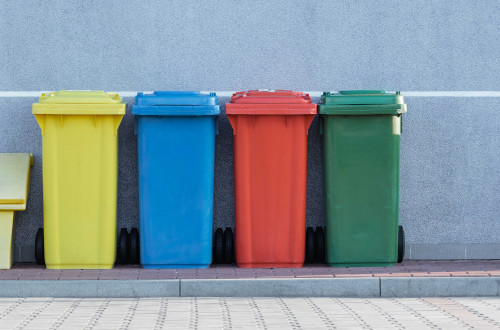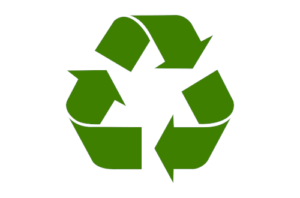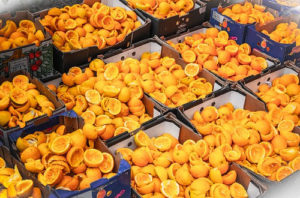How Do I Recycle?: Common Recyclables
Deciding to recycle items is just the first step, you also want to make sure the items are recycled correctly. Below you will find common recyclables and the best options to recycle them.
On this page:
Paper
Paper makes up 25 percent of municipal solid waste (trash) generated each year, more than any other material. Americans recycled nearly 66 percent of the paper they used in 2017. This recovered paper is used to make new paper products, saving trees and other natural resources. Most community or office recycling programs accept paper and paper products. Check what your community or office program accepts before you put it in the bin. When you go shopping, look for products that are made from recycled paper.
Gift Wrap and Gift Bags
If you use gift wrap, look to find a type that can be recycled or that is made from recycled content. Consumers can also reduce waste by using decorative boxes that do not require wrapping and that can be recycled. A lot of gift wrap isn’t recyclable because of the coating on the paper, which is often shiny and laminated. However, check with your local recycling provider first to be certain and for the best ways to dispose of wrapping paper.
The Agency encourages consumers to reuse gift bags and tissue paper, and not discard them after a single use.
Batteries
- Dry-Cell Batteries are used in a variety of electronics and include alkaline and carbon zinc (9-volt, D, C, AA, AAA), mercuric-oxide (button, some cylindrical and rectangular), silver-oxide and zinc-air (button), and lithium (9-volt, C, AA, coin, button, rechargeable) batteries. Look for in-store recycling bins or community collection events to dispose of these batteries.
Plastics
More than 35 million tons of plastics were generated in the United States in 2017, which was greater than 13 percent of the waste stream. Only 8.4 percent of plastics were recycled in 2017. Some types of plastics are recycled much more than others. Most community recycling programs accept some, but not all, types of plastics. Look for products made from recycled plastic materials.
What do the symbols mean on the bottom of plastic bottles and containers? These symbols were created by plastic manufacturers to help people identify the kind of plastic resin used to make the container. This can help you determine if the container can be accepted by your local recycling program. The resin number is contained in a triangle, which looks very similar to the recycling symbol, but this does not necessarily mean it can be collected for recycling in your community.

Photo courtesy of ASTM International.
Glass
Glass, especially glass food and beverage containers, can be recycled over and over again. In the United States in 2017, 11.4 million tons of glass were generated, 26.6 percent of which was recovered for recycling. Making new glass from recycled glass is typically cheaper than using raw materials. Most curbside community recycling programs accept different glass colors and types mixed together, and then glass is sorted at the recovery facility. Check with your local program to see if you need to separate your glass or if it can be mixed together.
Used Oil
Never dump your used motor oil down the drain — the used oil from one oil change can contaminate one million gallons of fresh water. By recycling your used oil you not only help keep our water supply clean, but help reduce American dependence on foreign oil. It takes 42 gallons of crude oil, but only one gallon of used oil, to produce 2.5 quarts of new motor oil. Many garages and auto-supply stores that sell motor oil also accept oil for recycling.
Household Hazardous Waste
Leftover household products that contain corrosive, toxic, ignitable, or reactive ingredients are considered to be household hazardous waste (HHW). Products such as paints, cleaners, oils, batteries, and pesticides that contain potentially hazardous ingredients require special care when you dispose of them. HHW may be dangerous to people or bad for the environment if poured down the drain, dumped on the ground, or thrown out with regular trash.
What you can do:
- Try to reduce your purchases of these products and look for alternative, non-hazardous products.
- When you do need to dispose of these products, look for special collection events in your community or permanent collection centers. Sometimes businesses that sell these products will also accept them for recycling.
- If you have to dispose of HHW, first check with your local waste management agency to see what rules apply in your community.
Tires
Disease-carrying pests such as rodents may live in tire piles. Tire piles can also catch on fire. Most garages are required to accept and recycle your used tires when you have new ones installed. You may be able to return used tires to either a tire retailer or a local recycling facility that accepts tires. Some communities will hold collection events for used tires.




